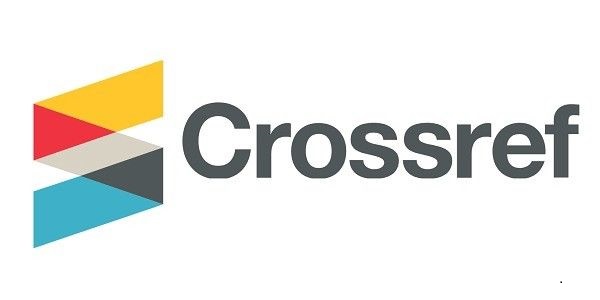Synthesis and characterization of some Schiff bases derived from orthophthalaldehyde and their bridged complexes with Co (II) and Ni (II) as corrosion inhibitors for carbon steel in acidic medium
DOI:
https://doi.org/10.56714/bjrs.50.1.20Keywords:
Schiff base, ortho-phthalaldehyde, inhibitors, corrosionAbstract
In this study, two Schiff base ligands, L1 and L2derived from ortho-phthalaldehyde and primary amines (4-aminopyridine and 4-aminobenzothiazole) were studied using infrared spectroscopy (IR), proton nuclear magnetic resonance spectroscopy ( 1HNMR), carbon- . 13 atomic magnetic coupled resonance spectroscopy (13 CNMR ), mass spectrometry, and also were performed by elemental analysis ,and then reacted with tetrathiocyanates in a 1:1 molar ratio with Schiff base ligands synthesized to produce diatomic mixed-metal-bridge complexes as (L MCd(SCN) 4), where M represents Co(II) or Ni(II) .These complexes were characterized by spectroscopic methods and magnetic susceptibility measurements .The results showed that all the complexes had the same coordination number of four. In addition, the cobalt complex exhibited paramagnetic properties, while the nickel complex exhibited diamagnetic properties. The synthesized Schiff base ligands were evaluated as an inhibitor of carbon steel corrosion in acidic medium and showed good inhibitory activity.
Downloads
References
H. Schiff, “Mittheilungen aus dem Universitätslaboratorium in Pisa: Eine neue Reihe organischer Basen,” Justus Liebigs Annalen Der Chemie, vol. 131, no. 1, pp. 118–119, Jan. 1864, doi: https://doi.org/10.1002/jlac.18641310113
E. Amenu, "Use and management of medicinal plants by indigenous people of Ejaji area (Chelya Woreda) West Shoa, Ethiopia: An ethnobotanical approach." In M. Sc. Thesis (2007). doi:https://shorturl.at/bxBLX
A. Zopiatis, “Is it art or science? Chef’s competencies for success,” International Journal of Hospitality Management, vol. 29, no. 3, pp. 459–467, Sep. 2010, doi: https://doi.org/10.1016/j.ijhm.2009.12.003
J. Liang, Q. Han, Y. Tan, H. Ding, and J. Li, “Current advances on Structure-Function relationships of pyridoxal 5′-Phosphate-Dependent enzymes,” Frontiers in Molecular Biosciences, vol. 6, Mar. 2019, Doi: https://doi.org/10.3389/fmolb.2019.00004
T. A. Martin and W. G. Jiang, “Editorial [Hot topic: Hepatocyte Growth Factor and cMET, New Development in Cancer Therapies (Guest Editors: T.A. Martin and W.G. Jiang)],” Anti-cancer Agents in Medicinal Chemistry, vol. 10, no. 1, p. 1, Jan. 2010 , Doi: https://doi.org/10.2174/1871520611009010001
N. S. Gwaram, “Synthesis and characterization of a Schiff base Cobalt (III) complex and assessment of its anti-cancer activity,” Chemsearch Journal, vol. 8, p.56 , 2017.
S. H. Kadhim , I. Q. Abd-Alla and T. J. Hashim, “Synthesis and Characteristic Study of Co (II), Ni (II) And Cu (II) Complexes of New Schiff Base Derived from 4-Amino Antipyrine , ” Int J Chem Sci, vol. 15 , p. 107, 2017.
S. Satpati, A. Suhasaria, S. Ghosal, S. Dey, and D. Sukul, “Interaction of newly synthesized dipeptide Schiff bases with mild steel surface in aqueous HCl: Experimental and theoretical study on thermodynamics, adsorption and anti-corrosion characteristics,” Materials Chemistry and Physics, vol. 296, p. 127200, Feb. 2023, doi: https://doi.org/10.1016/j.matchemphys.2022.127200
H. Jafari, E. Ameri, M. Rezaeivala, A. Berisha, and J. Halili, “Anti-corrosion behavior of two N2O4 Schiff-base ligands: Experimental and theoretical studies,” Journal of Physics and Chemistry of Solids, vol. 164, p. 110645, May 2022, Doi: https://doi.org/10.1016/j.jpcs.2022.110645
C. U. Ibeji, D. C. Akintayo, H. O. Oluwasola, E. O. Akintemi, O. G. Onwukwe, and O. M. Eziomume, “Synthesis, experimental and computational studies on the anti-corrosion performance of substituted Schiff bases of 2-methoxybenzaldehyde for mild steel in HCl medium,” Scientific Reports, vol. 13, no. 1, Feb. 2023, Doi: https://doi.org/10.1038/s41598-023-30396-3
A. Khezri, L. Edjlali, M. Es’haghi, M. T. Vardini, and H. Basharnavaz, “Addition of Schiff bases to hybrid Silane Sol–Gel coatings: An efficient strategy to develop an active system for corrosion protection of copper,” Journal of Materials Engineering and Performance, vol. 32, no. 23, pp. 10740–10749, Feb. 2023, Doi: https://doi.org/10.1007/s11665-023-07878-6
S. Kumar and V. K. Swami, “A COMPARATIVE STUDY OF INHIBITIVE EFFECTS OF SOME NEW SCHIFF BASES ON COPPER CORROSION IN ACIDIC MEDIUM,” Journal of Advanced Scientific Research, vol. 13, no. 02, pp. 176–182, Mar. 2022, doi: https://doi.org/10.55218/JASR.202213223
U. Nazir, Z. Akhter, N. Z. Ali, R. Hussain, F. Liaqat, A. Tahir and S. Qamar, “Corrosion inhibition studies of ferrocenyl Schiff bases in a mild acidic medium through experimental methods and DFT calculations,” New Journal of Chemistry, vol. 46, no. 8, pp. 3925–3938, Jan. 2022, Doi: https://doi.org/10.1039/D1NJ05612C
U. Nazir, Z.Akhter , N. K. Janjua , M. A.Asghar , S. Kanwal , T. M. Butt and F. U. Shah , “Biferrocenyl Schiff bases as efficient corrosion inhibitors for an aluminium alloy in HCl solution: a combined experimental and theoretical study,” RSC Advances, vol. 10, no. 13, pp. 7585–7599, Jan. 2020, Doi: https://doi.org/10.1039/C9RA10692H
O. A. El-Gammal, F. Sh. Mohamed, G. N. Rezk, and A. A. El-Bindary, “Structural characterization and biological activity of a new metal complexes based of Schiff base,” Journal of Molecular Liquids, vol. 330, p. 115522, May 2021, Doi: https://doi.org/10.1016/j.molliq.2021.115522
A. H. Jasim, M. Y. Kadhum, and S. Q. Badr, “Spectral Properties and Biological Activities of Binuclear Mixed-Metal Bridged Thiocyanate Complexes Containing Schiff Bases Derived from Isatin,” Engineering Proceedings, vol. 59, p. 237, 2024, Doi: https://doi.org/10.3390/engproc2023059237
M. Y. Kadhum and B. J. Al-musawi , "Preparation, identification and antimicrobial studies of some bimetallic bridged thiocyanates complexes containing N, N'-bis (4-isopropyl benzylidene) 4-methyl benzene-1, 2-diamine Schiff base ligand." Adv. Appl. Sci. Res , vol.6, p. 120-129, 2015.
N. Berber, “Synthesis of new Schiff base compounds and identification of their structures,” Adıyaman ÜNiversitesi Fen Bilimleri Dergisi, Jun. 2020, Doi https://doi.org/10.37094/adyujsci.633080
A. Sehmi, H. B. Ouici, A. Guendouzi, M. Ferhat, O. Benali, and F. Boudjellal, “Corrosion Inhibition of Mild Steel by newly Synthesized Pyrazole Carboxamide Derivatives in HCl Acid Medium: Experimental and Theoretical Studies,” Journal of the Electrochemical Society, vol. 167, no. 15, p. 155508, Jan. 2020, Doi: https://doi.org/10.1149/1945-7111/abab25
Y. Elkhotfi, I. Forsal, E. M. Rakib, and B. Mernari, “The inhibition action of essential oil of J. juniperus phoenicea on the corrosion of mild steel in acidic media,” Portugaliae Electrochimica Acta, vol. 36, no. 2, pp. 77–87, Jan. 2018, doi: https://doi.org/10.4152/pea.201802077
G. Palumbo, M. Górny, and J. Banaś, “Corrosion Inhibition of pipeline carbon steel (N80) in CO2-Saturated chloride (0.5 m of KCL) solution using gum arabic as a possible environmentally friendly corrosion inhibitor for shale gas industry,” Journal of Materials Engineering and Performance, vol. 28, no. 10, pp. 6458–6470, Oct. 2019, Doi: https://doi.org/10.1007/s11665-019-04379-3

Downloads
Published
Issue
Section
License
Copyright (c) 2024 J. Basrah Res. (Sci.)

This work is licensed under a Creative Commons Attribution 4.0 International License.







